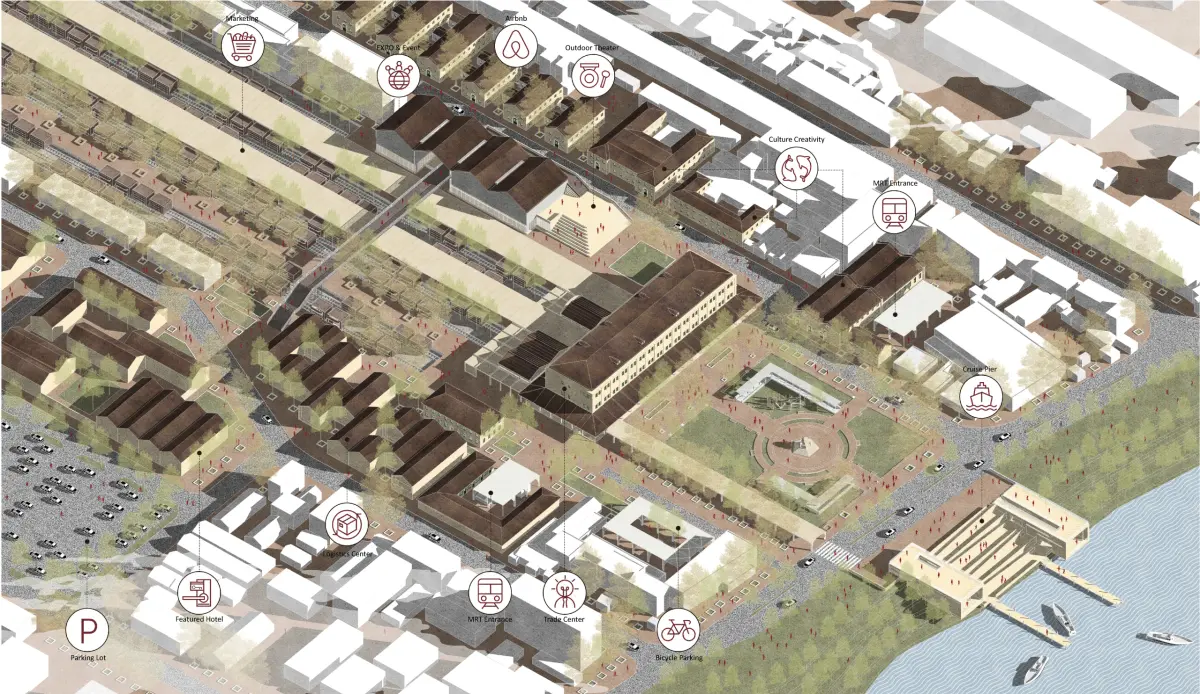
Platanus Orientalis Square
BY Yang Qing
SUPERVISED BY Assoc. Prof. Johannes Widodo (Dr.)
STUDIO THEME ASIAN MODERN HERITAGE IN THE CONTEXT OF CHANGE: CONSERVATION FOR SUSTAINABILITY
Abstract
As one of the most important capitals in Chinese history, Nanjing has continued to exude glory since ancient times. Pukou Railway Station, once the northern gate of Nanjing City, connects Nanjing with many important cities in China. With the deactivation of Pukou Railway Station, the old town of Pukou gradually became depressed. However, in these years the government is planning this area to be a new economic developing town. In the process of high-speed urbanization, how might we conserve this important historical city and bring back the glory of Nanjing? This thesis studies the conservation and adaptive reuse methods of historical architectural heritage as a traffic node, and focuses on cultural continuity and economic feasibility, which can serve as a reference for the conservation of many traffic architectural heritage in China.
Supervisor Comments
The conservation thesis proposed the adaptive reuse of a historical railway station in Nanjing, as well as the development of a civic centre, transportation node, and trading hub on the eastern side of the Qinhuai River, a tributary of the Yangtze that flows through central Nanjing and is known as "Nanjing's mother river" and the city's "lifeblood." The goal is to reestablish Nanjing as a key node on the ancient land Silk Road, the maritime Ceramic Route, and the modern One-Belt-One Road international links. By preserving the relevance of history, it presents a feasible alternative to the usual outright redevelopment of condominiums and commercial areas on the riverbank's prime location
- Assoc. Prof. Johannes Widodo (Dr.)